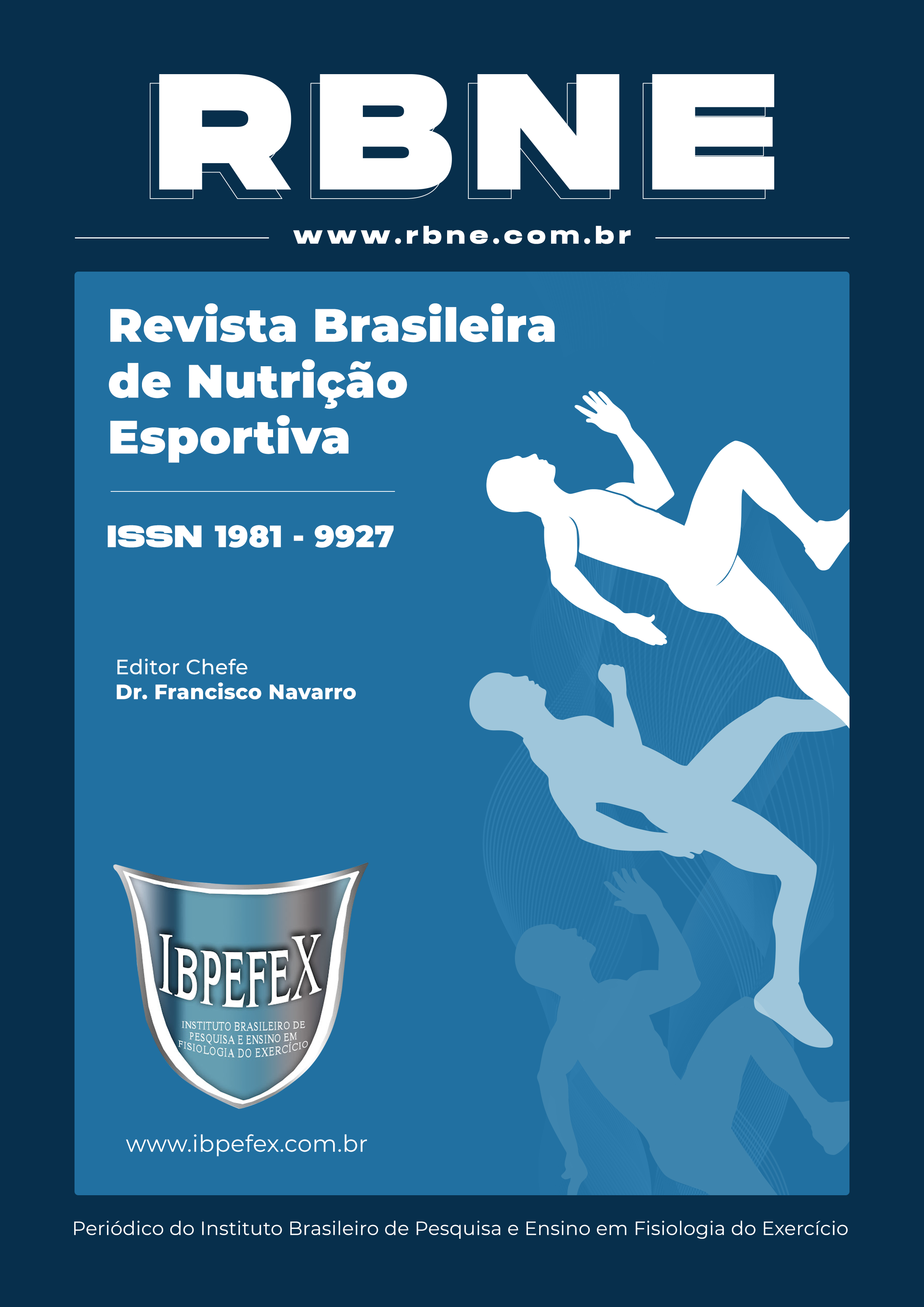Stato nutrizionale e consumo di bevande energetiche tra frequentatori e non frequentanti delle palestre a Luanda, in Angola
Abstract
Le bevande energetiche, composte anche da carboidrati e zuccheri, sono note anche per i loro effetti stimolanti, sia nel miglioramento delle prestazioni muscolari, sia per gli effetti psicostimolanti, soprattutto tra i praticanti di attività fisica e i giovani. Pertanto, lo studio ha cercato di comprendere la relazione tra lo stato nutrizionale e il consumo di bevande energetiche negli individui che frequentano e non frequentano le palestre a Luanda, in Angola, includendo 204 individui di sesso maschile, 102 per ciascun gruppo. I risultati mostreranno che le bevande più consumate sono il caffè e la bevanda energetica nazionale "A", avendo un'associazione statisticamente significativa tra la variazione dell'Indice di Massa Corporea (BMI) e la salute, p=0,002 nei nostri utenti di palestra e p=0,001 nei nostri utilizzatori non assidui, e tra il BMI e il tempo di consumo di bevande energetiche (p=0,01) tra i frequentatori di palestre, a dimostrazione che tali variazioni sembrano tendere ad alterare il modello nutrizionale di due individui.Riferimenti bibliografici
-Ágoston, C. et al. Why do you drink caffeine? The development of the motives for caffeine consuption quationnaire (MCCQ) and its relationship with gender, age and the types of caffeinated beverages. Int J Ment Health Addict. 2017.
-Ali, F.; et al. Energy drinks and their adverse health effects: A systematic review of the current evidence. Postgraduate Medicine. 2015.
-Ballistreri, M.C.; Corradi-Webster, C.M. O uso de bebidas energéticas entre estudantes de educação física. Latino-am Enfermagem. 2008.
-Bezerra, I.N.; Alencar, E.S. Associação entre excesso de peso e tamanho das porções de bebidas consumidas no Brasil. Rev Saude Publica. 2018
-Cangani, A.P.; et al. Determinação de cafeína e taurina em bebidas energéticas comercializadas em são paulo por eletroforese capilar. 2014.
-Casuccio, A.B.; et al. Knowledge, Attitudes, and Practices on Energy Drink Consumption and Side Effects in a Cohort of Medical Students. Journal of Addictive Diseases. 2015. p. 274-283.
-Curran, C.P.; Marczinski, C.A. Taurine, cafeine, and energy drinks: Reviewing the risks to the adolescent brain. Wiley periodicals. 2017. p. 140-148.
-Deliens, T.; et al. Correlates of University students soft and energy drink consumption according to genderand residency. Nutrients. 2015.
-Dossiê bebidas energéticas. Food ingredients Brazil . p. 36-47. 2012.
-FAO-OMS. General standard for food additives codex stan 192-1995. Codex alimentarius- International Food Standards.1997-2019.
-Ferreira, S.E.; et al. O efeito das bebidas alcoólicas pode ser afetado pela combinação com bebidas energéticas? um estudo com usuários. Rev Assoc Med Bras. 2004. pp. 48-51.
-Gaspar, S.D. Avaliação do risco da exposição a substâncias estimulantes (cafeína, taurina e glucuronolactona) em adolescentes do distrito de lisboa. Dissertação de Mestrado. Portugal. Coimbra. 2014.
-Glade, M.J. Caffeine-Not just a stimulant. Elsevier. 2010.
-Gutiérrez-Hellín, J.; Varilas-Delgado, D. Energy Drinks and Sports Performance, Cardiovascular Risk, and Genetic Associations; Future Prospects. Nutriens. 2021.
-Heckman, M.A.; Gonzalez de Mejia, E. Energy Drinks: An assessment of their market size, consumer demographics, ingredient profile, functionality, and regulations in the United States. Comprehensive Reviewa in Food Science and Food Safety. 2010.
-Jagim, A.R.; et al. International society of sports nutrition position stand: energy drinks and energy shots. Journal of the international society of sports nutrition. 2023.
-Jornal de Angola. Jornal de Angola. Jornal de Angola. 2019.
-Mahoney, C.R.; et al. Intake of caffeine from all sources and reasons for use by college studants. Clinical Nutrition. 2018.
-Manrique, C.I.; et al. Bebidas cafeínadas energizantes: efectos neurológicos y cardiovasculares. Iatreia. Vol. 31. Núm. 1. p. 65-75. 2018.
-Martins, J.S.; et al. Hábitos de consumo de álcool em estudantes do ensino superior universitário: alguns dados empíricos. Psychologica. p. 397-411. 2019.
-Mclellan, T. M.; Lieberman, H. R. Do energy drinks contain active components other than caffeine? Nutrition Reviews. Vol.70. Núm. 12. p.730-744730. p. 730-744. 2012.
-Morgan, H.L.; et al. Consumo de estimulantes cerebrais por estudantes de medicina duma universidade do extremo sul do Brasil: Prevalência, motivação e efeitos percebidos. Revista Brasileira de Educação Medica. 2017.
-Muwonge, H.; et al. Nutritional supplement practices of professional Ugandan athletes: a crosssectional study. Journal of the International Society of Sports Nutrition, p. 1-10. 2017.
-Nicholas, S.; et al. Energy drink consumption and marketing in South Africa. Preventive Medicine. 2017.
-Portaria n° 868, de 3 de nov. de 1998 da Secretaria de Vigilância Sanitária do Ministério da Saúde. Diário Oficial da República Federativa do Brasil, Poder Executivo. Brasília,-DF. Brasil. 1998.
-Salineiro, J. J. The use of enrergy drinks in sport: Perceived ergogeniciityy and side effects in male and female athletes. Britsh journal of nutrition. 2014.
-Striley, C.W.; Khan, S.R. Review of the energy drink literature from 2013:findings continue to support most risk from mixing. Current opinion Psychiatry. p. 263-268. 2014.
-Visran, S. Consuption of energy drinks by childrean and young people:A review examining evidence of physical effects and conusmer atittudes. BMJ Open. 2016.
-WHO. Physical Status: The and interpretation of Anthropometry. Geneva: World Health Organization. 1995.
Copyright (c) 2024 Lúcia de Fátima Chavito Massanga, Marli Stela Santana

Questo lavoro è fornito con la licenza Creative Commons Attribuzione - Non commerciale 4.0 Internazionale.
Gli autori che pubblicano in questa rivista accettano i seguenti termini:
- Gli autori conservano il copyright e concedono alla rivista il diritto di prima pubblicazione, con il lavoro contemporaneamente concesso in licenza con una Creative Commons Attribution License BY-NC che consente la condivisione del lavoro con il riconoscimento della paternità dell'opera e la pubblicazione iniziale in questa rivista.
- Gli autori sono autorizzati a stipulare separatamente ulteriori contratti, per la distribuzione non esclusiva della versione dell'opera pubblicata su questa rivista (es. pubblicazione in un repository istituzionale o come capitolo di libro), con riconoscimento della paternità e prima pubblicazione in questa rivista.
- Gli autori sono autorizzati e incoraggiati a pubblicare e distribuire il proprio lavoro online (ad es. in archivi istituzionali o sulla propria pagina personale) in qualsiasi momento prima o durante il processo editoriale, poiché ciò può generare cambiamenti produttivi nonché aumentare l'impatto e la citazione del lavoro pubblicato (Vedere L'effetto dell'accesso Aperto).
Gli autori che pubblicano in questa rivista accettano i seguenti termini:






